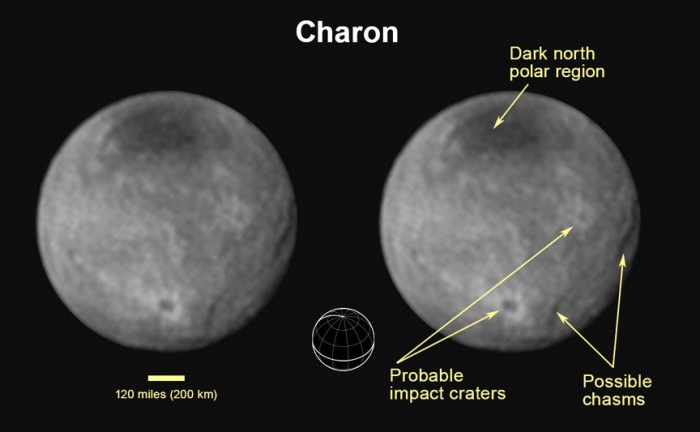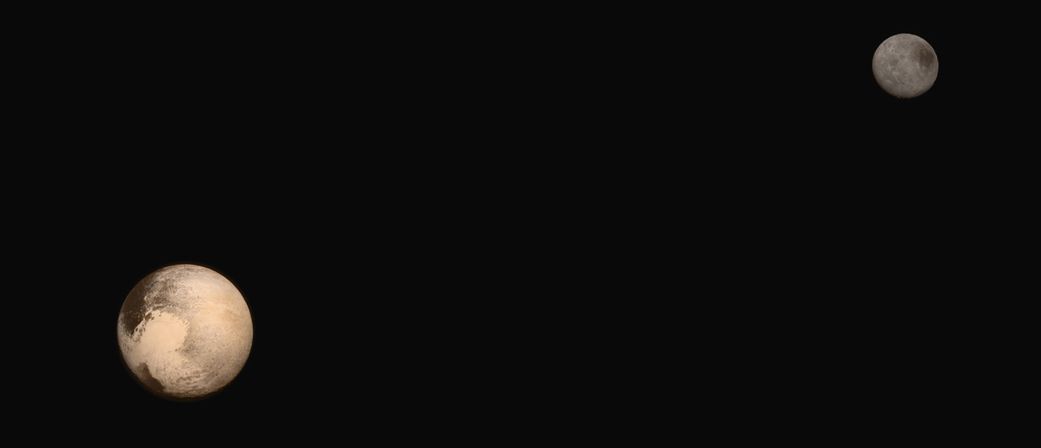Charon pluto s largest moon has a giant dark mark similar to a blood stain that is informally called mordor macula after the evil realm in j r r tolkein s the lord of the rings

Charon’s Mordor Macula: Unraveling the Mystery

Charon, Pluto’s largest moon, has long fascinated scientists with its mysterious dark mark resembling a blood stain. Aptly called Mordor Macula, after the evil realm in J.R.R. Tolkien’s epic fantasy series The Lord of the Rings, this enigmatic feature has left researchers puzzled for years. However, recent scientific breakthroughs have shed light on the origins of this peculiar formation.
Scientists were initially drawn to Charon’s Mordor Macula due to its striking contrast against the moon’s otherwise pale surface. It spans approximately 250 miles (400 kilometers) in diameter and is located near Charon’s north pole. Its dark and reddish appearance led to speculations ranging from residue deposited by Pluto’s atmosphere to a possible tar-like substance on the moon’s surface.
Thanks to NASA’s New Horizons spacecraft, which conducted a flyby mission in 2015 and provided scientists with invaluable insights, we now have a clearer understanding of this intriguing celestial phenomenon. After careful analysis of the spacecraft’s high-resolution images, researchers discovered that Mordor Macula is composed mainly of tholins.

Tholins are complex organic molecules formed through chemical reactions involving methane and nitrogen compounds present on Charon’s surface. These molecules are responsible for the reddish tint observed in the feature, giving it the appearance reminiscent of a blood stain. The dark coloration can be attributed to the accumulation of tholins over a significant period.
Further investigation revealed that Charon’s unique geological and atmospheric conditions contribute to the formation of tholins. The moon’s thin atmosphere, a result of its weak gravitational pull, allows volatiles from Pluto to escape and settle on the surface of Charon. Sunlight and cosmic rays then interact with these volatile compounds, leading to the creation of tholins.
The presence of Mordor Macula on Charon not only offers valuable insights into the moon’s geological activity but also provides a glimpse into the complex interplay between Pluto and its satellite. The discovery of tholins on Charon further solidifies the notion that organic compounds are prevalent in the outer reaches of our solar system.
The informal name given to this dark mark, inspired by Tolkien’s Lord of the Rings, not only adds a touch of intrigue but also highlights the fascination humans have with exploring the unknown. By associating it with the realm of evil, Mordor Macula seems to evoke a sense of otherworldly mystery and adventure.
As technology advances and our understanding of the universe expands, it is certain that more secrets will be uncovered. The captivating discoveries made about Charon’s Mordor Macula serve as a reminder that even in the vastness of space, there is always something waiting to be revealed.
Source: USA Today
Tags
Share
Related Posts
Quick Links
Legal Stuff

